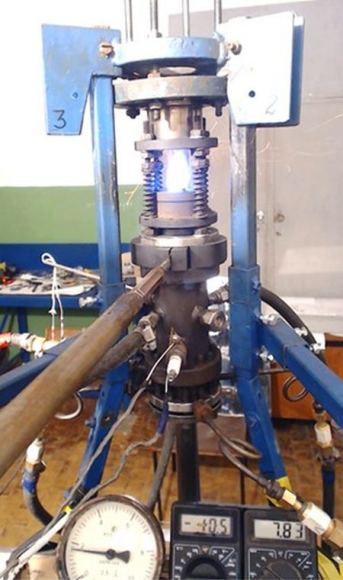When it comes to the new era of space exploration, one of the primary focuses has been on cutting costs. By reducing the costs associated with individual launches, space agencies and private aerospace companies will not only be able to commercialize Low Earth-Orbit (LEO), but also mount far more in the way of exploration missions and maybe even colonize space.
Several methods have been proposed so far for reducing launch costs, which include reusable rockets and single-stage-to-orbit rockets. However, a team of engineers from the University of Glasgow and the Ukraine recently proposed an entirely different idea that could make launching small payloads affordable – a self-eating rocket! This “autophage” rocket could easily send small satellites into space more easily and more affordably.
The study which describes how they built and tested the “autophage” engine recently appeared in the Journal of Spacecraft and Rockets under the title “Autophage Engines: Toward a Throttleable Solid Motor“. The team was led by Vitaly Yemets and Patrick Harkness – a Professor from the Oles Honchar Dnipro National University in the Ukraine and a Senior Lecturer from the University of Glasgow, respectively.

Together, the team addressed one the most pressing issues when it comes to rockets today. This has to do with the fact that storage tanks, which contain the rocket’s propellants as they climb, weight many times the spacecraft’s payload. This reduces the efficiency of the launch vehicle and also adds to the problem of space debris, since these fuel tanks are disposable and fall away when spent.
As Dr Patrick Harkness, who led Glasgow’s contribution to the work, explained in a recent University of Glasgow press release:
“Over the last decade, Glasgow has become a centre of excellence for the UK space industry, particularly in small satellites known as ‘CubeSats’, which provide researchers with affordable access to space-based experiments. There’s also potential for the UK’s planned spaceport to be based in Scotland. However, launch vehicles tend to be large because you need a large amount of propellant to reach space. If you try to scale down, the volume of propellant falls more quickly than the mass of the structure, so there is a limit to how small you can go. You will be left with a vehicle that is smaller but, proportionately, too heavy to reach an orbital speed.”
In contrast, an autophage engine consumes its own structure during ascent, so more cargo capacity could be freed-up and less debris would enter orbit. The propellant consists of a solid fuel rod (made of a solid plastic like polyethylene) on the outside and an oxidizer on the inside. By driving the rod into a hot engine, the fuel and oxidizer are vaporized to create gas that then flows into the combustion chamber to produce thrust.

“A rocket powered by an autophage engine would be different,” said Dr. Harkness. “The propellant rod itself would make up the body of the rocket, and as the vehicle climbed the engine would work its way up, consuming the body from base to tip. That would mean that the rocket structure would actually be consumed as fuel, so we wouldn’t face the same problems of excessive structural mass. We could size the launch vehicles to match our small satellites, and offer more rapid and more targeted access to space.”
The research team also showed that the engine could be throttled by simply varying the speed at which the rod is driven into the engine, which is something rare in a solid motor. During the lab tests, the team has been able to sustain rocket operations for 60 seconds at a time. As Dr. Harkness said, the team hopes to build on this and eventually conduct a launch test:
“While we’re still at an early stage of development, we have an effective engine testbed in the laboratory in Dnipro, and we are working with our colleagues there to improve it still further. The next step is to secure further funding to investigate how the engine could be incorporated into a launch vehicle.”
Another challenge of the modern space age is how to deliver additional payloads and satellites into orbit without creating more in the way of orbital clutter. By introducing an engine that can make for cheap launches that also has no disposable parts, the autophage could be a game-changing technology, one which is right up there with fully-recoverable rockets.
The research team also consisted of Mykola Dron and Anatoly Pashkov – a Professor and Senior Researcher from Oles Honchar Dnipro National University – and Kevin Worrall and Michael Middleton – a Research Associate and M.S. student from the University of Glasgow.
Further Reading: University of Glasgow, Journal of Spacecraft and Rockets

